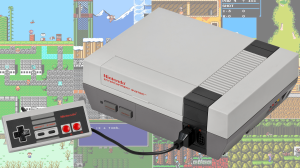When I was a kid, Final Fantasy VII absolutely defined the entire role-playing game genre for me. I had played RPGs before that, but none as surprising or inspiring as FF VII. Every aspect of the game blew me away: the visuals, the music, the story, and the characters all contributed to an experience that shaped my kid-hood in a significant way.
Videos by ComicBook.com
Ni no Kuni II: Revenant Kingdom has the potential to be that game for players in modernity. It is great enough to be a generation defining role-playing masterpiece for young gamers, and stands as an exemplar of quality and polish for more seasoned gamers like myself. Ni no Kuni II exudes an irresistible whimsy which manifests in every facet of its presentation.
If you’ve seen any of the trailers or have even a cursory familiarity with Ni no Kuni II or its predecessor, then you to expect a visual feast. This game is gorgeous. There’s a bit of give and take this time around, however. While it lacks some of the Studio Ghibli flair that made the original game so remarkable and original in its aesthetic, there can be no denying that the sequel does look much better, and things run at a silky smooth 60 fps.

Regal stone palaces, enchanted forests, rocky grottoes, and neon-drenched pleasure-cities are all yours to explore, and this world is inhabited by all manner of colorful, anthropomorphic animal people. Just as diverse, and just as lovely, is the score which lends stirring substance to your adventure. Ni no Kuni II is a living, breathing fairy-tale that you get to play in, and its beauty never ceases to delight.
What’s more, if you have a 4K display and a PS4 Pro, there’s an option to output at a dynamic 4K resolution without compromising performance. I enabled this mode with the PS4’s new supersampling option to see how it would look on my 1080p TV, and while it did make things marginally sharper, it also introduced some slight inconsistencies in frame pacing. The PS4 Pro’s supersampling solution is very likely to blame for this, and not the game itself, but it’s something you should be aware of.

Combat is vastly improved over the original. Gone are “familiars,” and here to stay are “higgledies:” colorful, sprite-like spirits who will aid you in combat and exploration. These little guys, for the most part, will stay out of your way until you need them. As you slash and cast your way through Ni no Kuni II‘s fast-paced, real-time battles, your higgledies will autonomously offer assistance, buffs, and enemy debuffs. Eventually they’ll reach a peak charge and, with a tap of a button, you can trigger their transformation into something especially useful, like a powerful cannon, or an area-of-effect healing circle.
Wholly unique to this entry is kingdom management, which introduces some very welcome, and non-intrusive sim elements to the game. As the young King Evan expands his kingdom, you’ll be tasked with installing the shops, farms, and facilities the kingdom and its people need to prosper. Careful stewardship over your kingdom’s currency is paramount as you decide what kind of buildings you need, what citizens are best suited to run them, and what kind of research they should carry out. Diligent management of your kingdom will yield powerful items, new weapons, new magic, and more powerful higgledies.

Dotted throughout the world map you’ll also come across banners which, when activated, initiate skirmishes. To put it simply, skirmishes play out as condensed real-time strategy battles wherein you control small units of soldiers of various classes, and clash with a rival faction army over control of a plot of land. Unit abilities, favorable and unfavorable match-ups between unit types, and careful use of military might, which enables you to unleash special skills (think MP), all play vital roles in your success as a tactician on the battlefield. It’s not groundbreaking, but it does break things up nicely.
Finally, a word on Ni no Kuni II‘s story. You won’t be encountering any mind-bending surprises or twists here, but Ni no Kuni‘s story is competently told, and does manage to weave in some surprisingly mature themes. I’m willing to bet that its opening minutes will impress most of you, as it introduces one of the key protagonists in a way that is effectively relatable. It does have a safe, Disney-like certainty about it — like you know nothing truly bad is actually going to happen — but it’s fitting considering the fairy-tale setting.
It’s rare to see a game attempt so many things and actually pull them off with grace. After tens of hours of play, I struggle to think back to my time with Ni no Kuni II and isolate something that stands out as a shortcoming or flaw. Level-5 set out to offer players a sweeping story filled with interesting characters, engaging real-time combat, and some innovative strategy and management elements for variety, and it succeeded at every turn. While the cuddly fairy-tale coating may turn off more hardened gamers, we’d admonish you not to miss out on what will ultimately be looked back on as one of the best RPGs on the PS4.
WWG’s Score: 4.5 / 5









